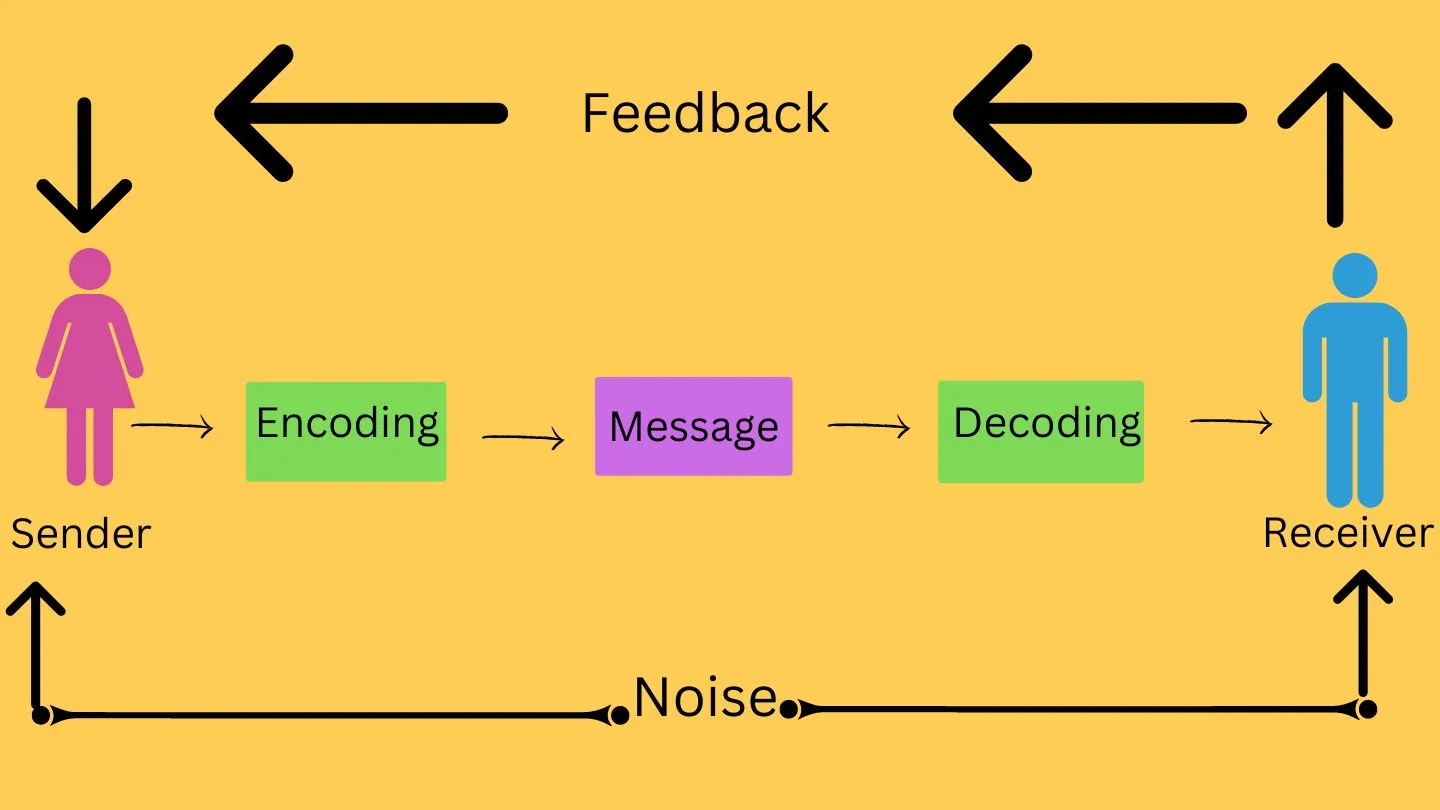Communication has been defined as a process of sharing information from one person to another. The elements of communication involved in the communication process are explained below sender, message, encoding, decoding, receiver, feedback, and noise.
Elements of communication
- Sender or Encoder: Sander is the person who creates the message Is known sender encoder is the one who encodes or sends the message or the originator of the message.
- Message: Sander is the person who sent the message to the receiver. After deciding what message to send, the source uses symbols to get the message across to others.
In other words, the message can be verbal and in nonverbal form transferred by the sender to the receiver.
Verbal message
A verbal message means oral communication between two people or more. It can also be in return form, for example, a teacher is giving a lecture to all students.
Non-verbal message
Non-verbal messages are those in which we do not use voice instead of voice. We use actions, body language, behavior, movements, etc. If the reader can’t identify the written message by the sender, it means the message or communication will be defective.
- Channel: Channel is a medium by which the standard transmits the message to the receiver. Humans have the 5 senses of hearing touching, smelling, tasting, and seeing, these are the basic natural channels of human communication.
- Receiver or decoder: The person who received the message sent it by the sender. The receiver role is also as important as the sender role.
The act of interpreting messages for decoding. Receivers decode messages based on past experiences, thoughts, and feelings We can receive messages through all are six senses but most of the time messages decoded by listening or seeing.
conclusion
In conclusion, the elements of communication play a vital role in the process of sharing information from one person to another person. The encodes the message and it transmits into signals and transmits through a channel to the receiver, who decodes the message. When there is a problem with communication noise is responsible for the bad communication process. Using these elements of communication can help effective communication, for more information stay connected with me.
